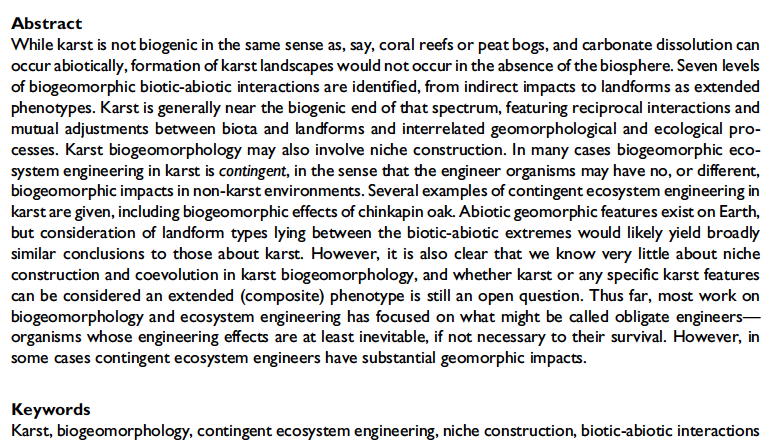GEOMORPHOLOGICAL STATE-AND-TRANSITION MODELS
State-and-transition models in geomorphology, co-authored with Chris Van Dyke, has just been published in Catena. The abstract is below:
State-and-transition models in geomorphology, co-authored with Chris Van Dyke, has just been published in Catena. The abstract is below:
Imagine exploring and mapping a newly discovered cave opening. At this point, there is only one set of questions--how long, deep, tall, wide, etc. is the passage, and where does it go? But as you begin to map it, more often than not, other passages and fissures will be discovered (and many of them will lead to others, and so on). This opens up a whole new set of questions. Some of the passages can be mapped, assuming someone can get the time and resources. Others can't be no matter how skilled the spelunker; they are too small. But even these can possibly be explored later, perhaps with remote control or AI tiny robots or probes; or with imaging techniques that can see through rock.
This is a pretty good metaphor, I think, for research in general. The more you learn, the more you discover you don't know, and more potential pathways for research appear--some possible now, some awaiting new techniques.
A forest biogeomorphology two-fer, courtesy of my central European boyz, who have graciously allowed me to ride their coattails here in the twilight of my career. The first is one where Pavel Daněk took some of my ideas and methods on applying graph theory to soil geomorphology, and went places with them I never even imagined:
The second is one that arose when Pavel Samonil took me to one of his field sites, where I saw things I hadn't imagined:
The abstracts are below.
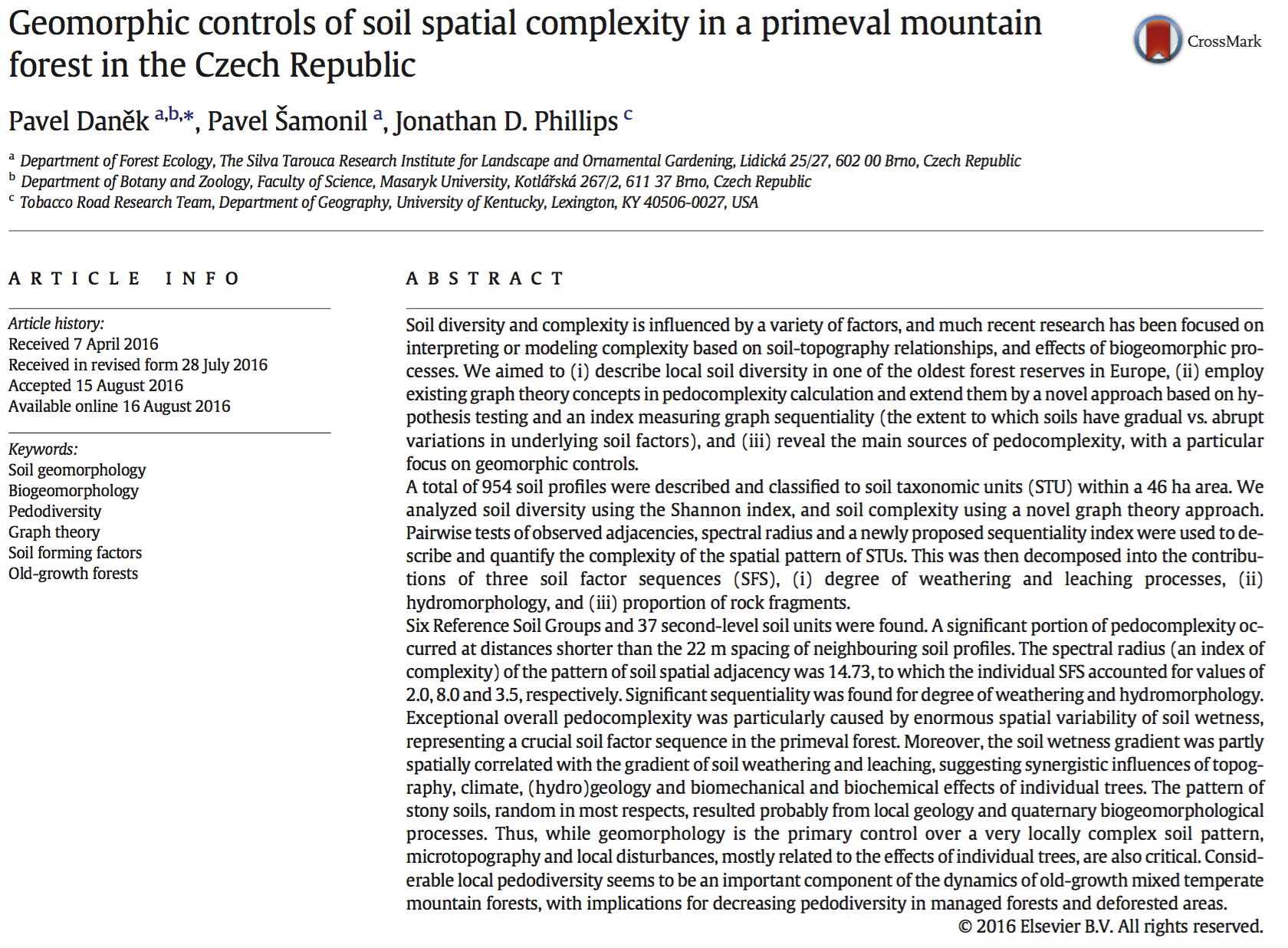
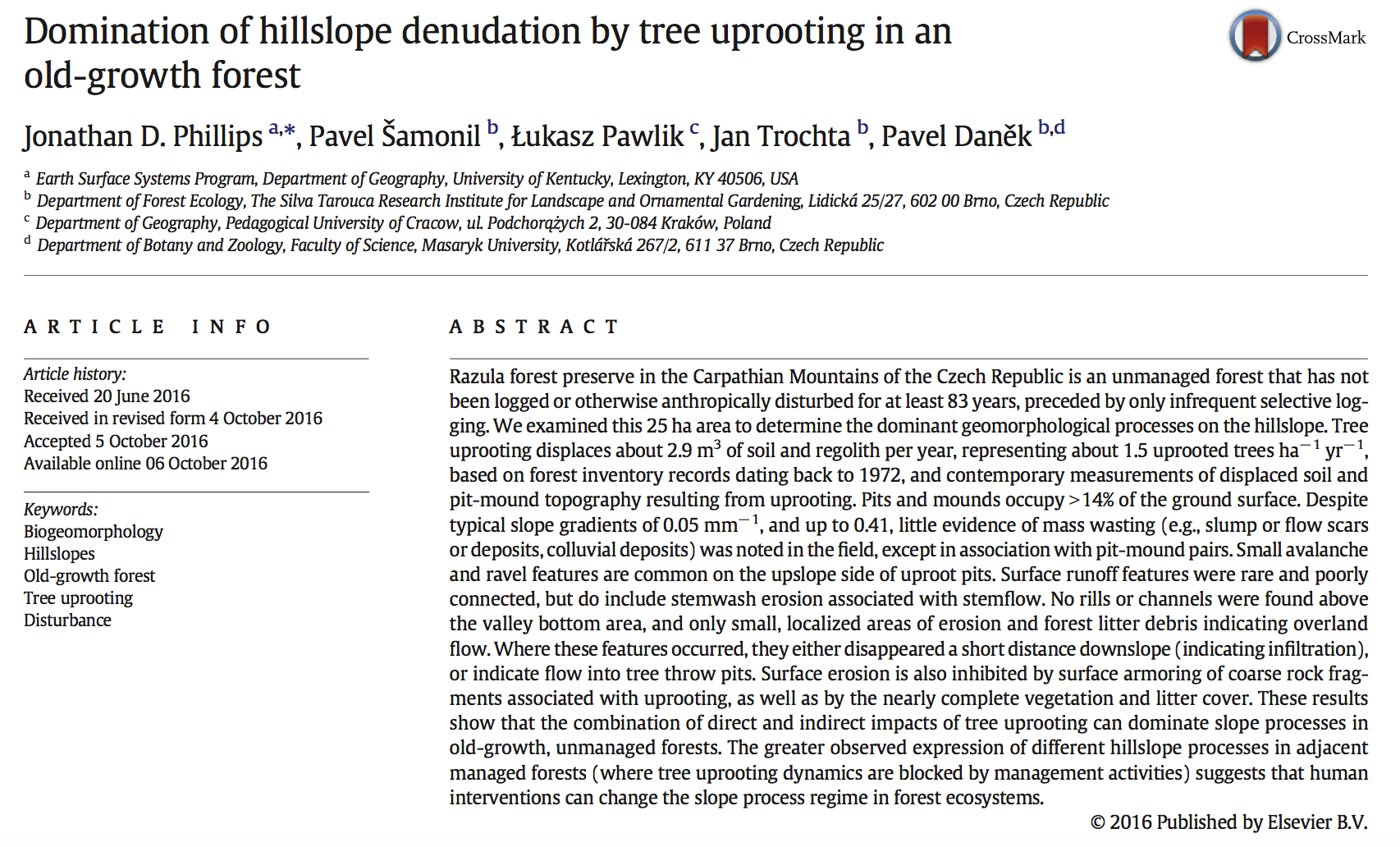
Hurricane Matthew devastated Haiti and other Caribbean areas, and did tremendous damage in Florida and South Carolina (I rode out the storm in Myrtle Beach, SC with my son Nate, his wife Morgan, and my delightful 2-year-old granddaughter Caroline). By the time it got to North Carolina, winds were down to gale force, but rain was ferocious (15 to 40 cm) in much of eastern N.C. Where I am at the moment, in Croatan, there was "only" about 10 cm of rain, and only gale force winds. However, that was enough, as it usually is, to get some geomorphic work done in the forest.
Below are some photos of trees uprooted by the storm in Croatan National Forest in the Flanner Beach area. Uprooting not only does significant soil mixing, but the pit-mound topography left behind significantly influences hillslope and soil processes for decades (and occasionally longer) thereafter.
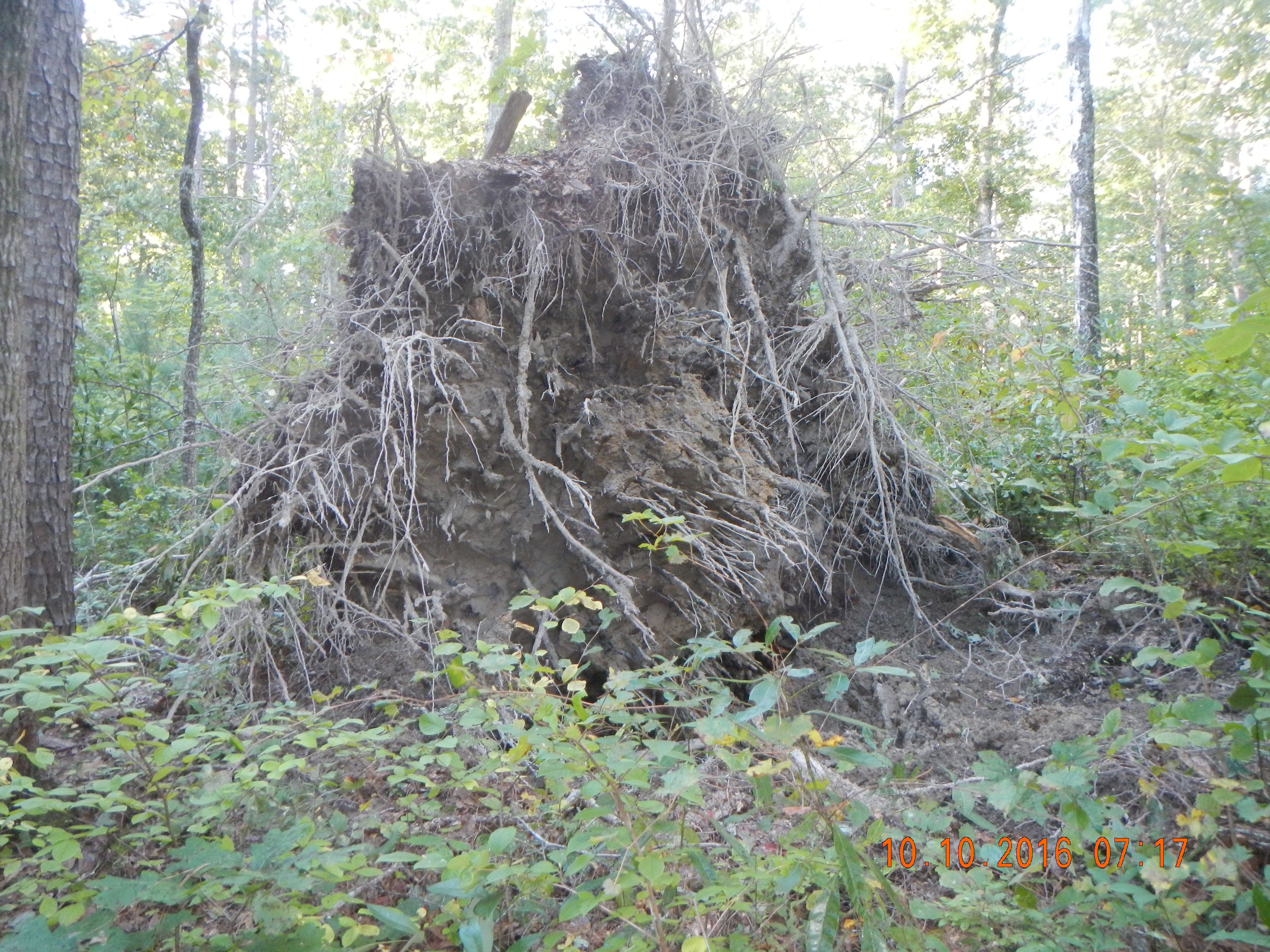
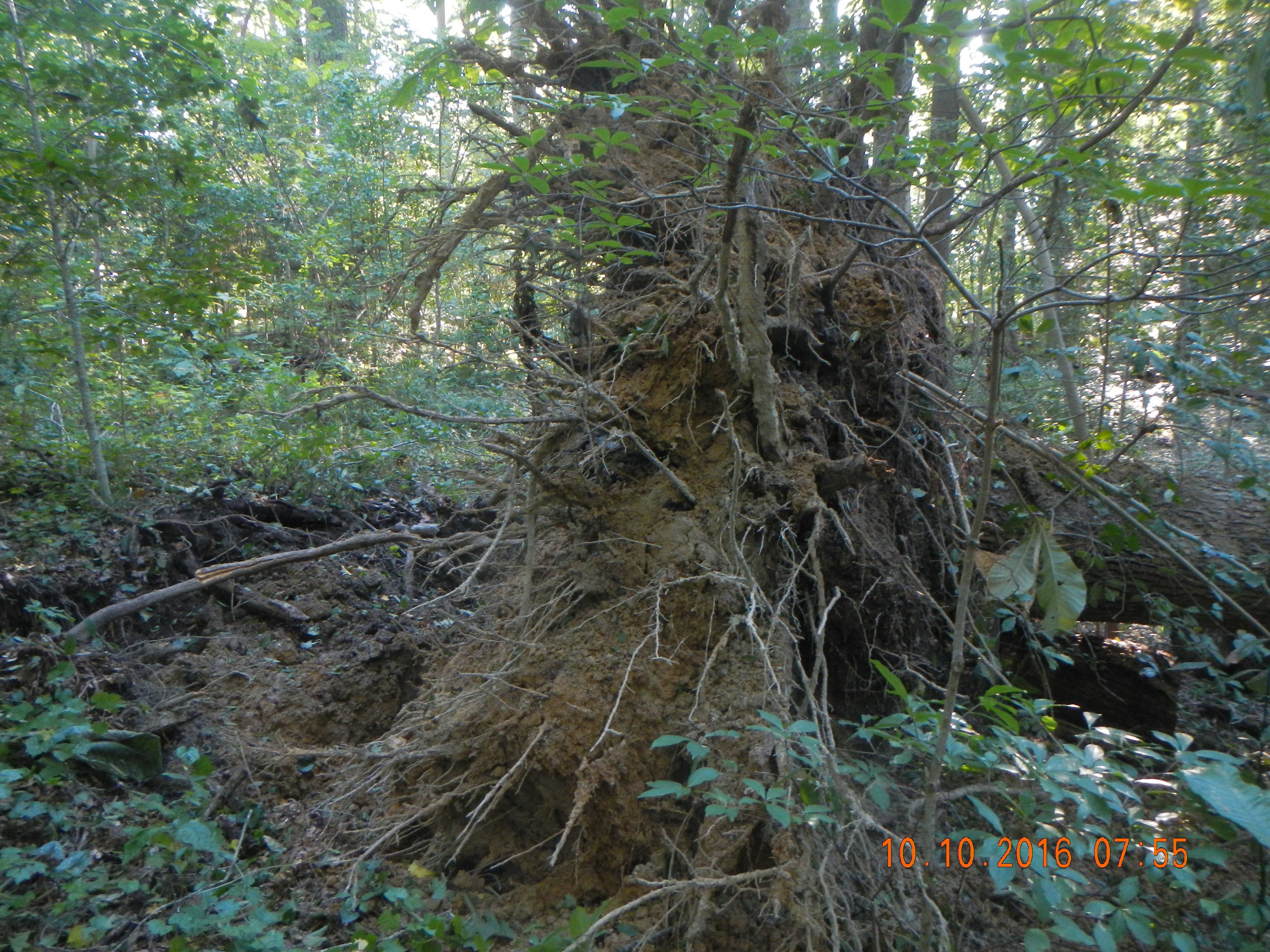
Another example from a cemetery near Maysville, N.C.

Many biogeomorphic ecosystem engineer organisms exert their biogeomorphic effects through intrinsic activities and behaviors that occur wherever the organism occurs. Ants, earthworms, sphagnum mosses, and marsh grasses, for example are going to have the same qualitative ecosystem engineering impacts wherever they occur. In other cases, however, biogeomorphic impacts may differ (or even occur) in different geomorphic settings or habitats. This can be called contingent ecosystem engineering, because the effects are contingent on the environmental setting. For example, beavers build dams to create suitable pond habitats, with attendant geomorphic effects on streams. However, where water is deep enough (that is, there is suitable habitat without damming a stream), they don’t bother building dams or lodges (though they do have different biogeomorphic impacts, via burrowing into banks for their lodges). Thus the ecosystem engineering impacts are contingent on the hydrophysical properties of the stream. An example of an organism where the existence (not just the nature or degree) of biogeomorphic effects is contingent is the sulfate reducing bacterium Desulfovibrio desulfuricans. This microbe is found in soil, water, and living organisms in a wide variety of settings.
Where soils are relatively shallow, tree roots penetrate into the underlying bedrock through joints and fractures and promote weathering by funneling water into the rock, and facilitating chemical weathering. In addition to these processes, mass displacement by tree growth and bedrock "mining" by tree uprooting help deepen soils and regoliths. While this ihas been demonstrated in several studies, it was unclear the extent to which these processes occur where the bedrock is flat-bedded sedimentary rocks, which offter fewer vertically oriented joints for root access. Soil deepening by trees and the effects of parent material addresses this question (yes, the same general processes do occur in horizontally-bedded rocks). The paper, just out in Geomorphology (vol. 269, p. 1-7) by (mostly) Michael Shouse and myself, also provides some heretofore unprecedented spatial resolution on the spatial variability of soil & regolith thickness attributable to effects of individual trees. The abstract is below.
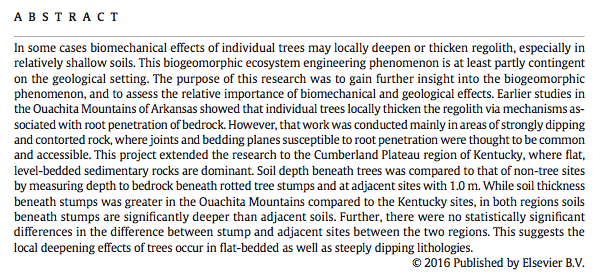
Just published in Earth-Science Reviews, and available via: http://www.sciencedirect.com/science/article/pii/S0012825216301143
I'm happy to have my name on this, and contributed enough to justfiy that, but this was not an equal contribution by all authors--Lukasz gets most of the credit!
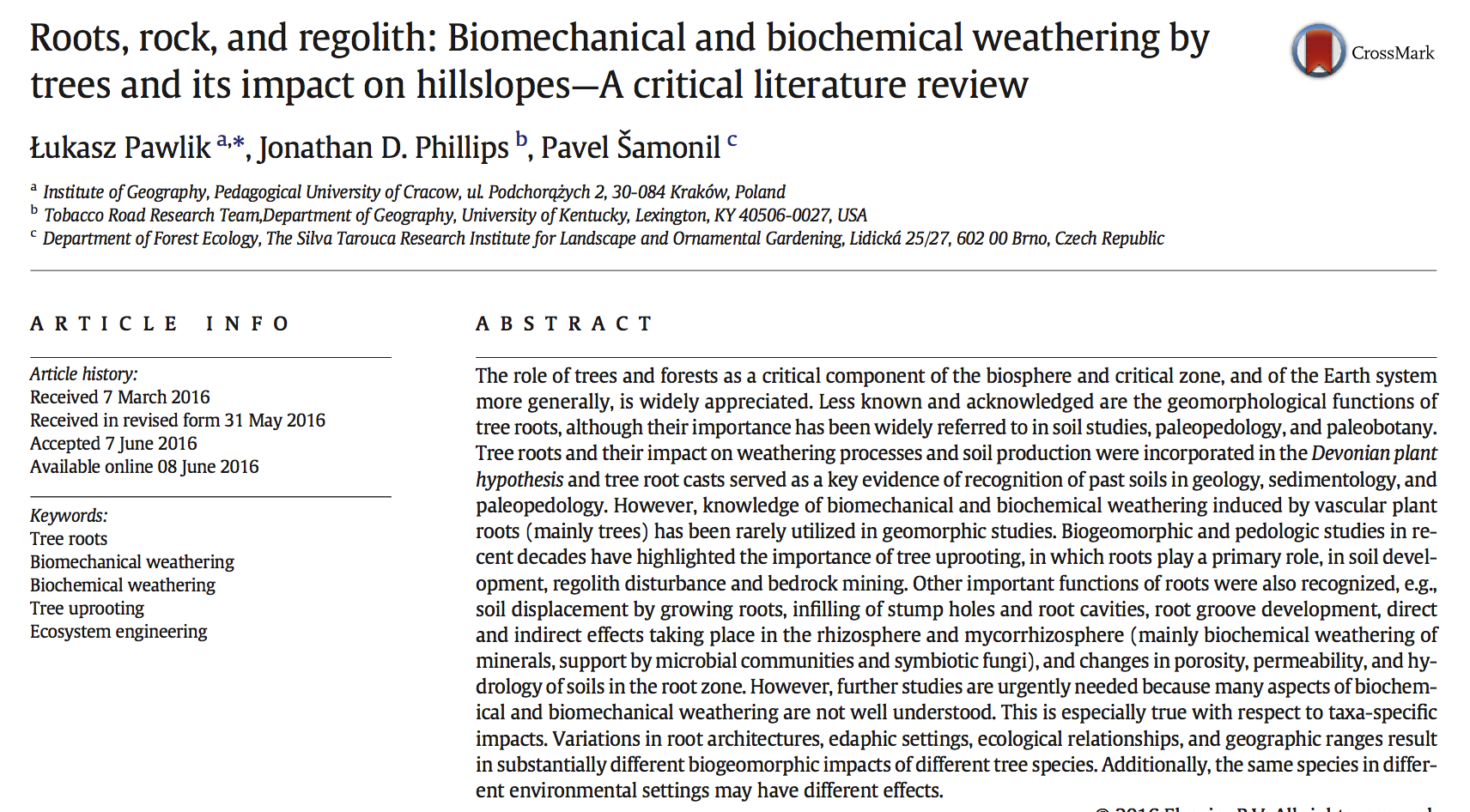
I've just spent a couple of excellent weeks working on a project investigating biogeomorphic impacts of trees, particularly in old-growth forests. With Pavel Samonil (Forest Ecology Dept., Sylva Tarouc Inst., Brno) and his PhD student Pavel Danek, we visited a number of sites in the Czech Republic. There is much to be done--some of the impacts we identified have never been studied before; others have been studied enough to reveal some complex questions and uncertainties. A sampling of what we saw follows.






There sometimes exists an intuitive or cognitive disconnect between the idea that Earth surface systems (ESS) may exhibit divergent evolution associated with dynamical instability and deterministic chaos; and the fact that ESS sometimes evolve so as to increase their complexity and interconnectedness. Despite the initial apparent inconsistency, these two phenomena can and do happen simultaneously within the same ESS.
Instability/divergence and evolution of increasing complexity are readily reconciled when you realize that instability and chaos are scale-contingent, so that divergence and pseudo-randomness occur within firm limits. Also, these phenomena in effects expand the options an ESS has for its development, thus creating more room for evolution of complexity.
The ecologist Robert Ulanowicz developed the notion of ascendancy as a measure of the complexity and interconnectedness of a system. Ascendancy is influenced by the quantity of matter and energy throughputs, and the network of mass/energy exhanges between system components. Almost 10 years ago (!) I used the notions of ascendancy and Kolmogorov entropy to show how dynamical instability and chaos can increase ascendancy.
More shameless self-promotion: The online first version of my new article in Progress in Physical Geography is now available: Biogeomorphology and Contingent Ecosystem Engineering in Karst Landscapes. It is not uncommon to acknowledge anonymous reviewers in an article, and I do so here, but it does not do justice to the breadth, depth, and insight of comments I received on an earlier version from three reviewers (which ran to 14 pages!). Whatever the flaws of the final product, it is a heck of a lot better as a consequence of their efforts. Thanks, whoever you are!
